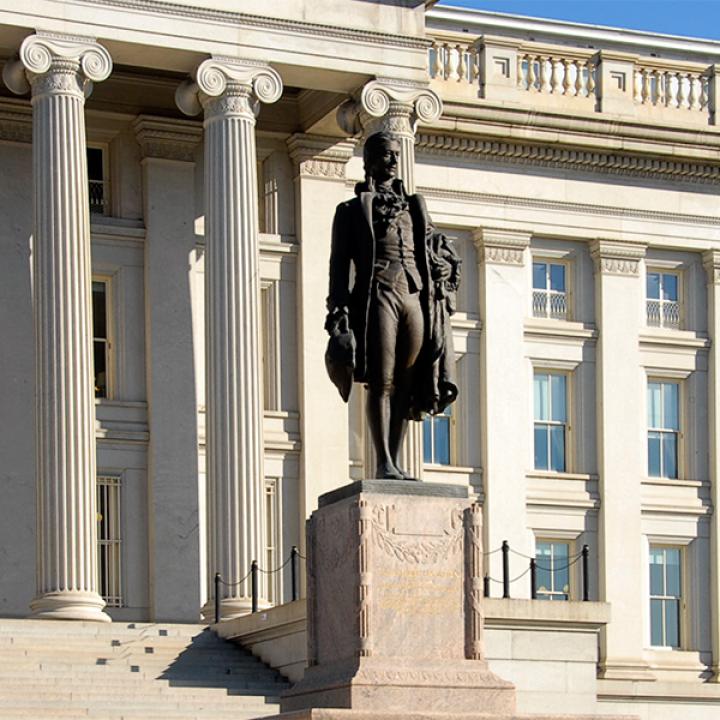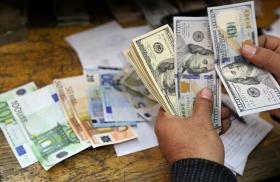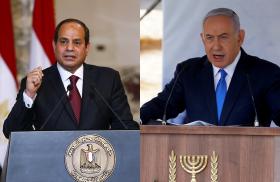
- Policy Analysis
- PolicyWatch 4130
Removing Syria’s Designation as a State Sponsor of Terrorism: Retaining Leverage and Ensuring Accountability

As the Trump administration considers delisting Syria, it must maximize the chances of success while preparing for the possibility of failure.
Syrian President Ahmed al-Sharaa will be visiting Washington on November 10, nearly six months after his first meeting with President Trump. U.S. Special Envoy Tom Barrack has stated that during this visit, Sharaa will “hopefully” sign an agreement to join the U.S.-led Global Coalition to Defeat ISIS. As part of this process, the administration will likely move to lift Syria from the list of State Sponsors of Terrorism (SST). A credible case can be made to support this decision, given the flexibility in the SST statutes and the steps Sharaa has already taken against the Islamic State, Hezbollah, and Iran. If the administration does pursue this path, however, there are steps it should take—under the SST framework and beyond—to retain leverage and ensure that Damascus is held accountable if it fails to live up to its counterterrorism commitments.
An Opportunity with Several Conditions
Syria has been on the SST list since Congress created it in 1979, making it the longest-term member of this undesirable club. Since President Trump first met with Sharaa in May, he has made clear his belief that Syria should be given a chance to succeed and that the heavy sanctions against it will affect its ability to do so. In a June executive order, Trump directed Secretary of State Marco Rubio to review Syria’s inclusion on the list, cautioning that before it is removed, it would need to demonstrate progress on addressing the foreign terrorist threat, deporting Palestinian terrorists, banning Palestinian terrorist groups, assisting Washington in preventing an Islamic State (IS) resurgence, and taking over the IS detention centers in northeast Syria.
Syria’s Long SST History
Syria was designated as an SST during the Hafiz al-Assad regime and remained there under his son Bashar. It was initially included for supporting groups like the Palestine Liberation Organization and the Popular Front for the Liberation of Palestine. Over the years, the State Department cited a range of other nefarious activities to explain why Syria was still on the list, including its deep relationship with Hezbollah; its willingness to let Hamas and Palestinian Islamic Jihad have a significant presence in the country and operate freely; its ties with Iran’s Islamic Revolutionary Guard Corps; and its support, during several different periods, for foreign terrorist fighters traveling to the region. (Interestingly, Sharaa himself was such a fighter in the early years of the conflict in Iraq).
The secretary of state has broad latitude to determine who should be on the list, with countries meeting the threshold if they “repeatedly provided support for acts of international terrorism.” The examples of Afghanistan and Lebanon show how much flexibility the secretary has in this area. Even when Hezbollah assumed a formal role in the Lebanese government in 2005 and the Taliban took over Afghanistan in 2023, Washington did not designate either one as an SST.
Syria’s Counterterrorism Performance
The new government in Damascus has taken serious steps to crack down on Syria’s use as a transit hub for Iranian and Hezbollah weapons and money, in sharp contrast to the Assad regime. It has also worked against IS—as far back as 2013, Sharaa had a serious rift with the group’s predecessor, the Islamic State of Iraq—and has even cooperated with Washington on a number of targeted operations. Syria has also created a military unit specifically to incorporate the foreign fighters who were part of the forces that overthrew Assad. The State Department, in revoking Hayat Tahrir al-Sham’s Foreign Terrorist Organization (FTO) designation in July, agreed with Sharaa, the group’s leader, that it had disbanded.
Ideally, though, even if the Trump administration makes the case for removing Syria’s SST designation, it would move slowly in this process. More time is needed to fully assess the Syrian government’s performance in this area, particularly how it will handle issues related to foreign terrorist fighters. It is essential for Washington to have more clarity on which fighters are being brought into the government, what roles they will have, and what the government will do about those who cannot or should not be incorporated. According to Barrack, the United States has accepted Sharaa’s plan to integrate select foreign fighters as long as there is full transparency. While transparency is vital, so too is a process to ensure that those serving in the government have truly left their careers as jihadists behind them.
Additionally, there are still issues with Syria’s counterterrorism performance, though this is hardly surprising for a fledging government with limited resources and experience. While the political will may be there, Syria’s ability to prevent Hezbollah and Iran from exploiting its territory is still unproven. Cooperation on IS has been fairly limited to date, and the government is also struggling to effectively integrate the Syrian Democratic Forces, which could have an impact on counterterrorism efforts. Furthermore, Sharaa’s government has not yet agreed on a plan for assuming responsibility for the SDF-controlled IS detention centers in northeast Syria, where thousands of foreign fighters remain in custody.
Even so, the Trump administration could reasonably argue that removing Syria’s SST designation would enable Washington to provide the assistance necessary for Damascus to bolster its counterterrorism capabilities and address some of these gaps. This could include funding under the Defense Department’s Counter-Islamic State of Iraq and Syria Train and Equip Fund (CTEF) and the State Department’s Nonproliferation, Anti-Terrorism, Demining, and Related Programs accounts.
Two Paths to Syria’s SST Removal
There are two possible paths to removing Syria from the SST, both of which have been used on multiple occasions in the past. The first is a certification by the president to Congress that the government in question has not supported international terrorism over the previous six months, along with assurances from that government that it will not resume such support in the future. Then, forty-five days after congressional notification, that country can be formally removed.
The second option is for the president to certify that there has been a “fundamental change” in the government and that it is no longer involved in any type of terrorist activity. That government must also provide the United States with assurances that it will not engage in terrorist activity again.
Retaining Leverage with Delisting
If the Trump administration does proceed with lifting Syria’s SST designation, it should insist on robust written assurances from Sharaa’s government. This document should encompass not only promises to forsake any type of terrorist activity, but also broader counterterrorism commitments—on IS, Iran and its proxies, and foreign fighters. Such an approach would be squarely in line with past iterations of this process. Specifically, the Syrian government should commit to:
- fully cooperating with the United States and other coalition countries, including operationally, to prevent an IS resurgence within its territory;
- developing a transition plan for IS fighter detention facilities and displaced persons camps holding IS family members;
- enforcing zero tolerance of terrorism for foreign fighters being integrated into the Syrian military;
- refusing to allow foreign fighters tied to IS to hold government positions;
- fully cooperating with the United States and other partners in preventing Iran and Hezbollah from operating on Syrian territory;
- joining the U.S.-led forums dedicated to countering Iranian terrorism (i.e., the Law Enforcement Coordination Group and the Countering Transnational Terrorism Forum) and cooperating with their members.
If the administration does remove Syria’s SST designation, it would be best to do so through the six-month review provision. Asserting that Syria is no longer a State Sponsor based on the “fundamental change” provision would send the message that the administration is satisfied with the current state of affairs and leave it with less leverage and flexibility in the future. The cases of Cuba and North Korea show that sanctions removed using the six-month review provision can be fairly easily reimposed. However, there are no instances in which a country removed through the “fundamental change” provision has been returned to the list. This is likely less an issue of legal hurdles and more one of messaging and optics, but the administration should take this into account when making its determination.
Syria is also on the list of “not fully cooperating countries” (NFCC) for counterterrorism efforts, which carries a range of export control restrictions. The State Department announced Syria’s inclusion on the list the day before Trump’s meeting with Sharaa. The department is required to update this list annually, so Syria will once again be subject to review in spring 2026. Given how unsettled these issues still are, it is essential for the Trump administration to find a path that increases Syria’s chances for success while still holding the new government responsible for its actions.
Michael Jacobson recently rejoined The Washington Institute as a senior fellow in the Reinhard Program on Counterterrorism and Intelligence after serving in the State Department’s Counterterrorism Bureau from 2010 to 2025, most recently as director of strategy, plans, and initiatives.



